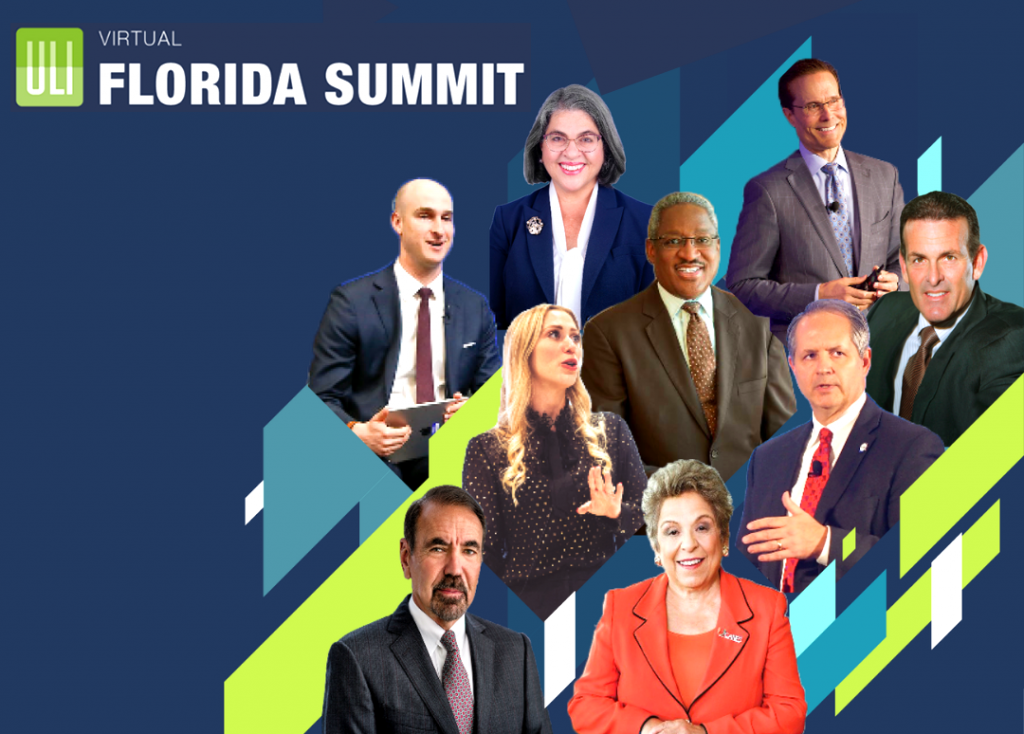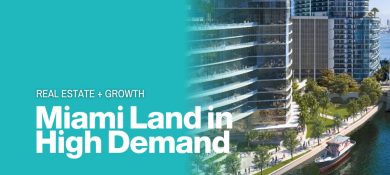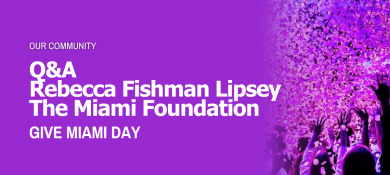
Urban Land Institute (ULI)’s statewide summit convenes business, real estate and government leaders for an economic and industry outlook
By Yudi Fernandez Kim & Madeline Fine
The Urban Land Institute (ULI) held its highly anticipated Florida Summit for the eighth year, a conference that brings together the greatest minds in the public and private sector to discuss the most pressing issues and trends the state faces. Amongst the timely topics addressed this year were affordable housing supply, the threat of sea level rise, infrastructure spending and the rise in business migration.
As a proud sponsor of the ULI Florida Summit, Schwartz Media Strategies participated in the 2021 virtual conference. Here are our top 10 takeaways from this year’s insightful and impactful programming:
#1 The Business Migration Effect: Although COVID-19 accelerated the migration to South Florida, Florida’s business friendly climate, tax incentives, tropical weather, and pleasant lifestyle has been fueling this trend for years now.
#2 From Trend to Movement: Leading Miami developer Jorge Perez, the opening speaker at the ULI Summit, pointed out that Northeastern companies moving to Florida is not a short-term trend, but a long-term movement because of the friendly business environment, cultural and lifestyle offerings and the unmatched weather the Sunshine State offers.
#3 Move to Miami: Conference speaker Nitin Motwani, Managing Director of Miami Worldcenter, pointed out how the Miami Downtown Development Authority (Miami DDA)’s Move to Miami campaign “Follow the Sun” began eight years ago and has attracted around 30 businesses to downtown Miami, with triple that amount in the pipeline. The agency continues to promote Miami’s business-friendly climate, talent pool, and tax incentives to lure more finance and tech companies to the city’s central business district.
#4 The One-Story Apartment Trend: Providing access to a backyard and outdoor space in addition to all the amenities of a traditional apartment building, leading developers are seeing a rise in interest for one-story apartments. With one-story product, there are no neighbors above or below you, no shared staircases or elevators, and the benefit of a heightened sense of privacy like consumers would find with a single-family home.
#5 All Eyes on the Labor Shortage: When the home building industry crashed during 2006-2009, the construction labor market was forced to migrate across different industries to find work or face unemployment. As the housing market was slow to come back, disabled by the mortgage market that first caused the downturn, the construction labor pool distributed across other fields like the oil, gas, and tech industries. Currently, most industries are experiencing a shortage as a result of the pandemic, but many eyes are on the ever-low construction labor market as the pandemic caused more unemployment in the field and now markets are experiencing high demand for new product but little supply of workers to fill that demand.
#6 Redefining Demand for Lifestyle Living: In a post-pandemic environment, it has become clear that people want urban sensibility in a residential environment. People are social by nature and enjoy being around others, along with the convenience of being able to walk down the street for their favorite coffee, retail, or hospitality needs found in urban environments. Lockdowns and the pandemic heightened people’s need for space and access to nature and the outdoors, redefining the appropriate balance between urban convenience in residential environments.
#7 Filling the Income Gap: As the region experiences business migration, it has only expanded the gap between the wealthier and lower income residents. This is making affordable housing more imperative than ever to provide additional housing inventory to the working and lower-income classes. Developer Jorge Perez said during his opening session remarks that this widening gap has led his company to increase affordable housing production, in particular markets such as Miami-Dade, Palm Beach and the Tampa Bay area.
#8 Miami-Dade Investing More in Affordable Housing: In a session with Miami-Dade County Mayor Daniella Levine Cava, who made history in November 2020 becoming the first woman to serve as the county’s mayor, addressed how the county is accelerating the construction of workforce and affordable housing and renovating existing residential buildings to create additional quality housing units. Overall, the county has earmarked $260 million in total funding leveraging local, state and federal dollars towards workforce and affordable housing and aims to deliver 14,000 units by end of 2022.
#9 Climate Conference Coming to Florida: During his opening session, developer Jorge Perez also addressed the need for the development community, on both the residential and commercial sides, to be more vocal about the climate change and sea level rise. He expressed how the industry has to unite and work hand-in-hand with local, state and the federal government to find answers and identify solutions to make the region livable long term. In fact, Miami Beach is preparing to welcome the Aspen Institute’s first climate change-themed conference that will be held next spring.
#10 Prioritizing Transit-Oriented Development: One of the key points Miami-Dade Mayor Levine Cava made is how the county has passed legislation and put policies in place to allow for an increase in transit-oriented development, leveraging public-private sector efforts by partnering with experienced developers to build in underutilized, publicly owned land near mass public transit. Mayor Cava said there are six major corridors that have been identified for these developments and hopes that the federal infrastructure bill will provide additional funding to continue building along them over the years to come.







 See More Blogs
See More Blogs
Comments